ER-induced PERK/TFEB cascade sequentially modulates mitochondrial dynamics during cranial suture expansion
- PMID: 40550802
- PMCID: PMC12185732
- DOI: 10.1038/s41413-025-00427-y
ER-induced PERK/TFEB cascade sequentially modulates mitochondrial dynamics during cranial suture expansion
Abstract
The effectiveness of cranial suture expansion therapy hinges on the timely and adequate regeneration of bone tissue in response to mechanical stimuli. To optimize clinical outcomes and prevent post-expansion relapse, we delved into the underlying mechanisms governing bone remodeling during the processes of suture expansion and relapse. Our findings revealed that in vitro stretching bolstered mesenchymal stem cells' antioxidative and osteogenic capacity by orchestrating mitochondrial activities, which governed by force-induced endoplasmic reticulum (ER) stress. Nonetheless, this signal transduction occurred through the activation of protein kinase R-like ER kinase (PERK) at the ER-mitochondria interface, rather than ER-mitochondria calcium flow as previously reported. Subsequently, PERK activation triggered TFEB translocation to the nucleus, thus regulating mitochondrial dynamics transcriptionally. Assessment of the mitochondrial pool during expansion and relapse unveiled a sequential, two-phase regulation governed by the ER stress/p-PERK/TFEB signaling cascade. Initially, PERK activation facilitated TFEB nuclear localization, stimulating mitochondrial biogenesis through PGC1-α, thereby addressing energy demands during the initial phase. Subsequently, TFEB shifted focus towards ensuring adequate mitophagy for mitochondrial quality maintenance during the remodeling process. Premature withdrawal of expanding force disrupted this sequential regulation, leading to compromised mitophagy and the accumulation of dysfunctional mitochondria, culminating in suboptimal bone regeneration and relapse. Notably, pharmacological activation of mitophagy effectively mitigated relapse and attenuated bone loss, while its inhibition impeded anticipated bone growth in remodeling progress. Conclusively, we elucidated the ER stress/p-PERK/TFEB signaling orchestrated sequential mitochondria biogenesis and mitophagy under mechanical stretch, thus ensuring antioxidative capacity and osteogenic potential of cranial suture tissues.
© 2025. The Author(s).
Conflict of interest statement
Competing interests: The authors declare no competing interests.
Figures
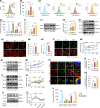


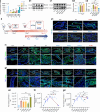
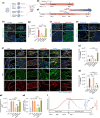
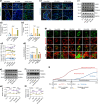

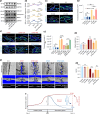
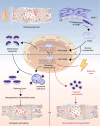
Similar articles
-
"The role of mitogen-activated protein kinase signaling pathway in bone formation during mid-palatal suture expansion".Connect Tissue Res. 2025 May;66(3):216-226. doi: 10.1080/03008207.2025.2498509. Epub 2025 Apr 29. Connect Tissue Res. 2025. PMID: 40298405
-
Transcription Factor EB Overexpression through Glial Fibrillary Acidic Protein Promoter Disrupts Neuronal Lamination by Dysregulating Neurogenesis during Embryonic Development.Dev Neurosci. 2025;47(1):40-54. doi: 10.1159/000538656. Epub 2024 Apr 18. Dev Neurosci. 2025. PMID: 38583418 Free PMC article.
-
PERK activation mediates neuroprotection against chronic unpredictable stress-induced neurobehavioral changes via the TFEB pathway.Pharmacol Biochem Behav. 2025 Oct;255:174071. doi: 10.1016/j.pbb.2025.174071. Epub 2025 Jul 15. Pharmacol Biochem Behav. 2025. PMID: 40675457
-
Protein-rich foods, sea foods, and gut microbiota amplify immune responses in chronic diseases and cancers - Targeting PERK as a novel therapeutic strategy for chronic inflammatory diseases, neurodegenerative disorders, and cancer.Pharmacol Ther. 2024 Mar;255:108604. doi: 10.1016/j.pharmthera.2024.108604. Epub 2024 Feb 13. Pharmacol Ther. 2024. PMID: 38360205 Free PMC article. Review.
-
Mitochondrial quality control in hematopoietic stem cells: mechanisms, implications, and therapeutic opportunities.Stem Cell Res Ther. 2025 Apr 15;16(1):180. doi: 10.1186/s13287-025-04304-7. Stem Cell Res Ther. 2025. PMID: 40234908 Free PMC article. Review.
References
MeSH terms
Substances
Grants and funding
- 82370988/National Natural Science Foundation of China (National Science Foundation of China)
- 32271416/National Natural Science Foundation of China (National Science Foundation of China)
- 81870743/National Natural Science Foundation of China (National Science Foundation of China)
- 82170934/National Natural Science Foundation of China (National Science Foundation of China)
- 2024YFHZ0043/Sichuan Provincial Department of Science and Technology | Sichuan Province Science and Technology Support Program
LinkOut - more resources
Full Text Sources

